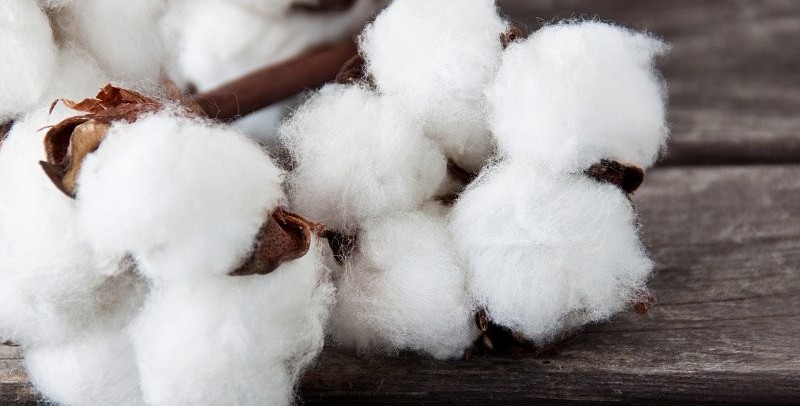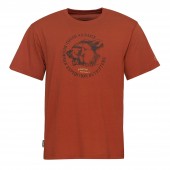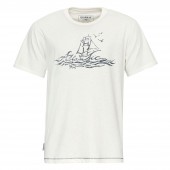Cotton or organic cotton? You will feel the difference!

Few people know that cotton was grown several thousand years ago in Egypt, Pakistan and Mexico, and that the first exports to Europe took place from India in the sixth century AD. Or that white cotton balls provide annual shrubs with cute names such as hairy cotton and that the first industrial cotton spinning mill in Central Europe was established in 1797 here in Bohemia at Verneřice in the Děčín region. But today we will look deeper at it: cotton as a raw material, an input in the production of clothing collections.
In the case of cotton, we are often convinced that it is a completely harmless and natural material. However, every coin has two sides, as is the case with all textile materials, and cotton is no exception. One of the most fundamental negatives of classic production is that cotton needs specific conditions for growth as it is very delicate, easily succumbs to pests and its life path is demanding on water consumption. In addition, other substances are used in the finishing of cotton material to increase the functionality and comfort of wearing cotton products (antistatic, reducing the absorption of sweat and odor, reducing creasing).
However, due to its properties, cotton still stands out as one of the most widely used crops in the textile industry, even though, compared to the 19th century, when cotton accounted for approximately 80% of the volume of all textile materials, it is today - due to synthetic materials - about 30%. It is grown in warm areas around the world. Since 2012, cotton production has started to decline and this trend appears to be still declining. As is the case today in all sectors, even here, multinational companies are pushing down the purchase price, forcing cotton growers to use cheap chemical sprays, which are often toxic or carcinogenic. We are aware of this, which is why we control all our supply and production processes, and we do not want to support this method of cultivation and production. Once the production process affects people's health and lives, as well as the threat to the environment, it can no longer be a low cost and high margin product in terms of human and corporate responsibility. Only a quality product is healthy. And that's what we're all about.
The natural properties of cotton fibre are reflected in each product.
One of the most important properties and advantages of cotton is its resistance to mechanical and chemical influences, therefore for its excellent tensile and abrasion strength. In addition, when cotton gets wet, its strength increases by up to an incredible 20%. This is the main reason why products that have to withstand this kind of test, and which we will also wash more often, are more durable.
Another advantage is the softness of cotton. Cotton is a pleasant material to the touch, and in addition it can absorb a large percentage of moisture. The ability to absorb moisture is so good that it can absorb up to 25% of water from the environment without being wet to the touch. It is therefore also popular for clothing, where movement, staying in the sun or activities in an environment with high humidity is expected. Despite the large number of advantages, cotton also has its disadvantages. One of them is the fact that cotton garments are often easily creased, and naturally small lumps can form, which begin to form on cotton fabrics over time. One of the disadvantages of cotton is its limited protection against the cold. It does not heat up much in winter, because the thermal insulation is very low and decreases with increasing humidity. On the other hand, in the summer it will help with unpleasant heat. Due to sunlight, it turns brown, brittle and the strength decreases, because the resistance of cotton fibre to the sun is not very high, and its colours fade over time and lose saturation.
Just as there is nothing perfect in life nor is there in textile technology. Cotton is a natural fibre that has its own specific properties that are imprinted on each product made from it. So don't expect something from cotton clothes that they can't offer us, and let's rejoice above all at the quality, benefits and comfort they give us when worn.
Bio/Eco/Organic cotton
BIO cotton represents a return to safer and more sustainable methods of growing and processing raw cotton material. It grows in ‘living soil’ and must be grown without pesticides for at least 3 years in order to obtain BIO certification and cotton must be processed in accordance with international standards for organic production. Such soil uses crop rotation and is enriched with natural compost and other organic material without the use of pesticides and chemical fertilizers, so you can wear a T-shirt or other products without worrying about your ecological footprint on this planet. Mechanical cultivation and biological means are used to control pests and weeds.
The whole process is so friendly to the environment as well as to our body and health. If you want to be sure that a textile is truly organic, focus on international certificates - a reliable certificate is, for example, the Global Organic Textile Standard (GOTS) or the Soil Association.
Organic cotton is softer to the touch, because the fibre has more fluff and is not damaged by any chemicals. Organic cotton fabrics undergo a lower degree of processing, and are thus more durable, more flexible, stronger, more breathable and retain a greater natural softness. Organic cotton smells ‘cleaner’ because formaldehyde is not used in its processing. Human skin can breathe better because it has a higher degree of breathability and does not interfere with the Balance of Nature. Pure, natural cotton does not cause any allergic reactions.
Organic cotton products are slightly more expensive than ordinary cotton, which is due to the higher costs of cultivation and production. Not using agricultural chemicals today means quite a strenuous and financially demanding process.
According to the latest surveys, the market for organic cotton products is still increasing. However, their total share is still less than 1%. However, the annual increase in organic cotton growth is all the more visible. For example, it rose by 20% between 2008 and 2009. The largest producers of organic cotton are currently Turkey, the USA and China.
Certification
Unlike organic food, the production of biotextiles is not yet subject to any international legislative measures, apart from the identification of the organic origin of raw materials. As in the market for natural cosmetics, there are a large number of private standards and brands. The best-known organizations that have established biotextile control systems include the Organic Trade Association (OTA) in the USA, the British Soil Association, the German International Natural Textile Industry Association (IVN), the European and International Demeter, the Scandinavian KRAV, the Japanese Japan Organic Cotton Association (JOCA) or the Dutch SKAL.
Whatever type of cotton you choose, it is important to choose the product by using it almost to the point wearing it out, feeling great in it on your travels and expeditions, and that care will also befit the value of the product and your approach to it. Naturally.
















